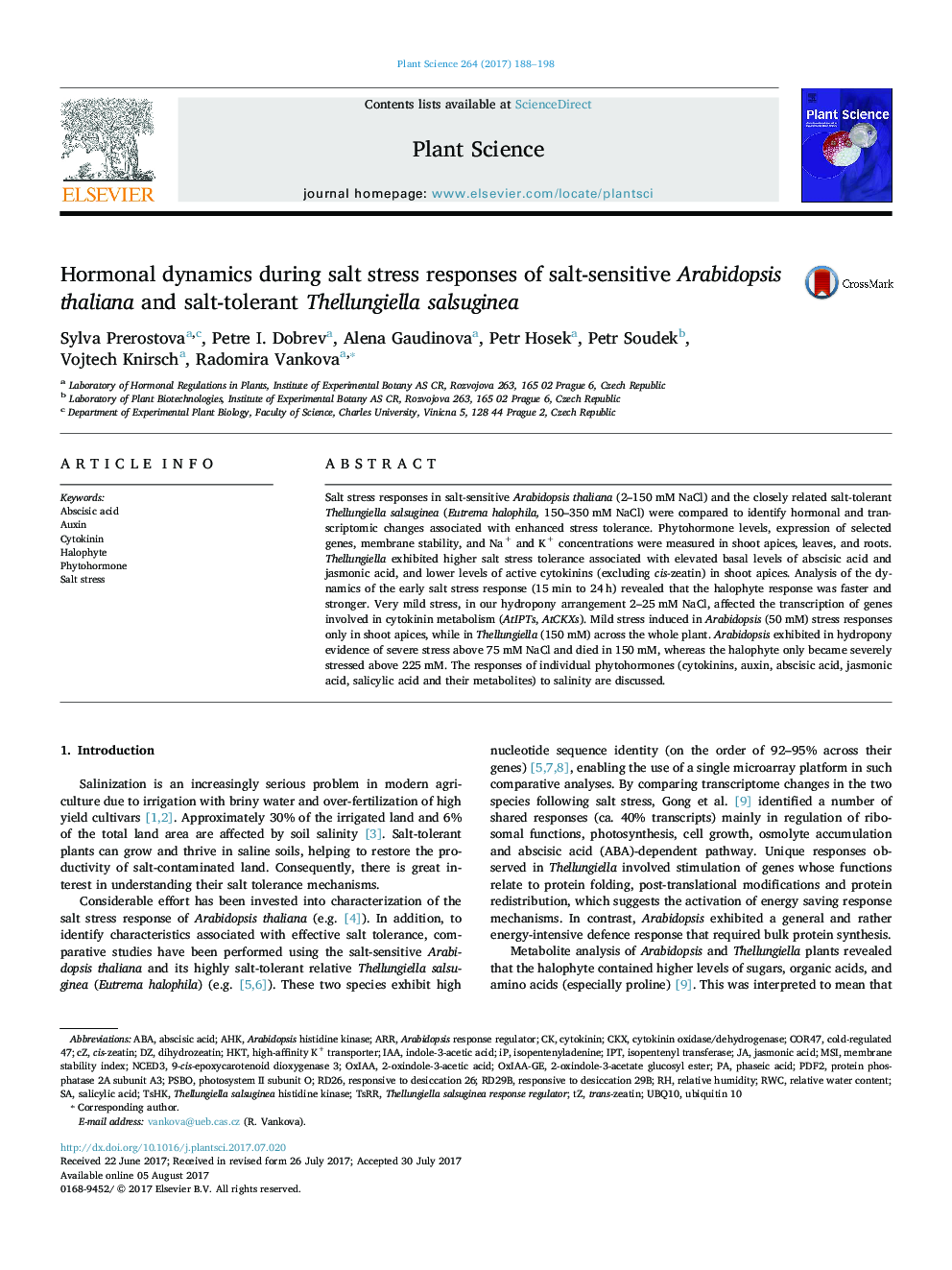| Article ID | Journal | Published Year | Pages | File Type |
|---|---|---|---|---|
| 5515725 | Plant Science | 2017 | 11 Pages |
â¢Wide phytohormone range was followed during salinity response for the first time.â¢Hormonome and transcriptome reflected the salt stress strength.â¢Plants protected under salt stress preferentially shoot apical meristem (apex).â¢Thellungiella responded faster and more effectively to salt stress than Arabidopsis.â¢The important role of cytokinin cis-zeatin during salt stress tolerance was shown.
Salt stress responses in salt-sensitive Arabidopsis thaliana (2-150Â mM NaCl) and the closely related salt-tolerant Thellungiella salsuginea (Eutrema halophila, 150-350Â mM NaCl) were compared to identify hormonal and transcriptomic changes associated with enhanced stress tolerance. Phytohormone levels, expression of selected genes, membrane stability, and Na+ and K+ concentrations were measured in shoot apices, leaves, and roots. Thellungiella exhibited higher salt stress tolerance associated with elevated basal levels of abscisic acid and jasmonic acid, and lower levels of active cytokinins (excluding cis-zeatin) in shoot apices. Analysis of the dynamics of the early salt stress response (15Â min to 24Â h) revealed that the halophyte response was faster and stronger. Very mild stress, in our hydropony arrangement 2-25Â mM NaCl, affected the transcription of genes involved in cytokinin metabolism (AtIPTs, AtCKXs). Mild stress induced in Arabidopsis (50Â mM) stress responses only in shoot apices, while in Thellungiella (150Â mM) across the whole plant. Arabidopsis exhibited in hydropony evidence of severe stress above 75Â mM NaCl and died in 150Â mM, whereas the halophyte only became severely stressed above 225Â mM. The responses of individual phytohormones (cytokinins, auxin, abscisic acid, jasmonic acid, salicylic acid and their metabolites) to salinity are discussed.
